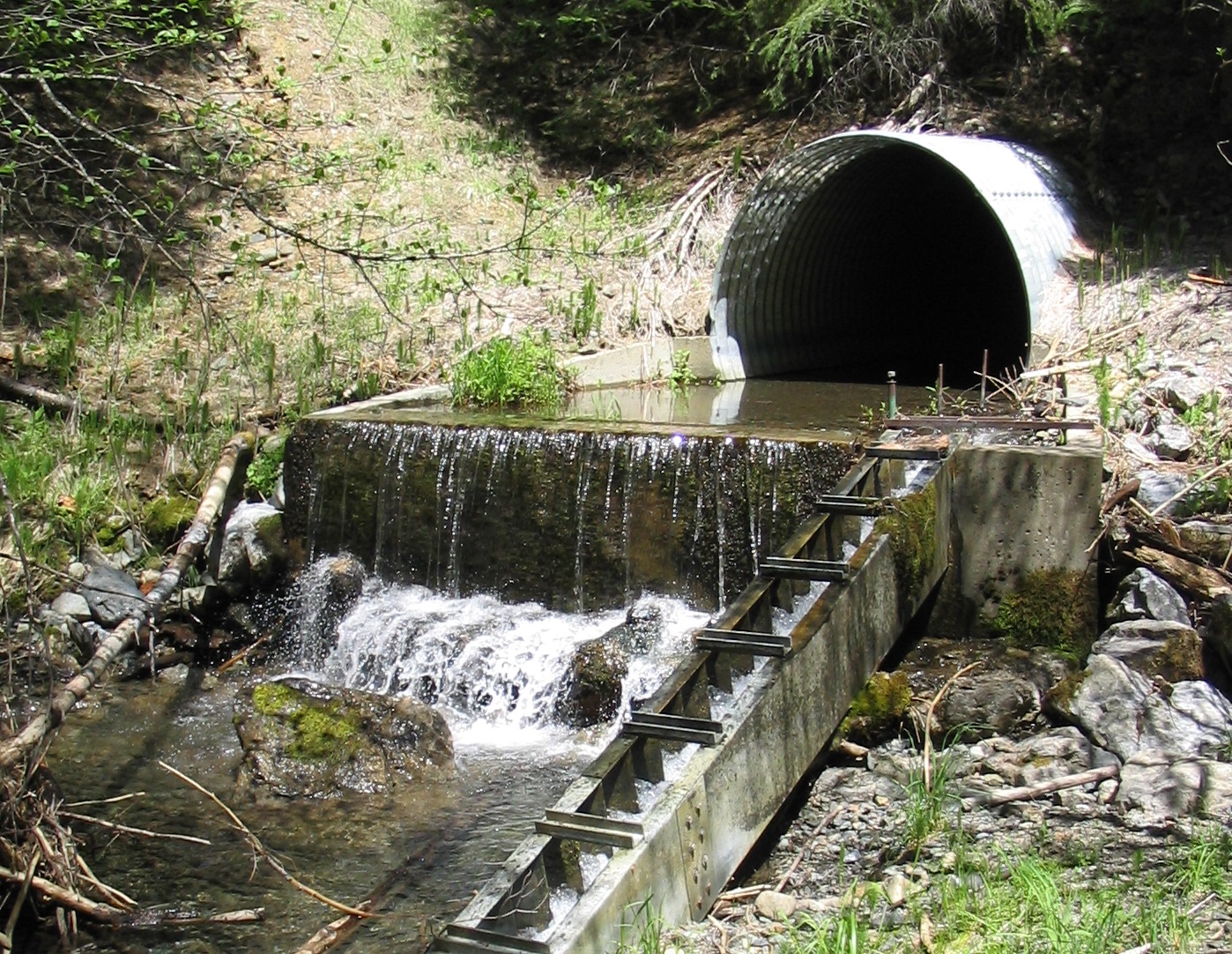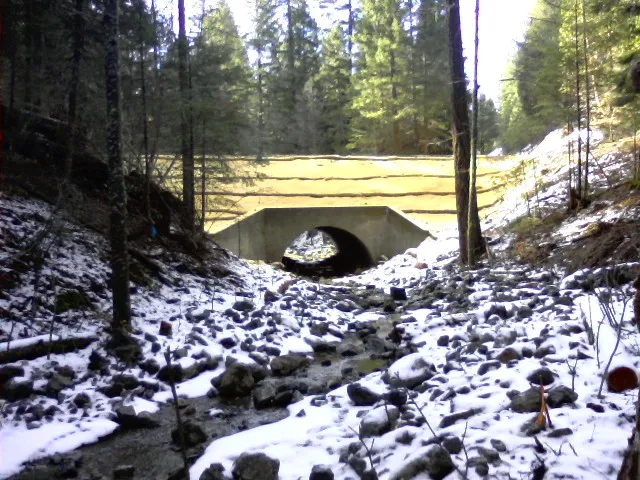Wilson Creek Fish Passage Project
Location: Wilson Creek, tributary to Hayfork Creek, tributary to South Fork Trinity River in the Shasta-Trinity National Forest.
Purpose: The site had a seven-foot diameter corrugated metal pipe (CMP) culvert under a National Forest road that crossed Wilson Creek. The outlet area of the culvert was composed of a concrete-poured block pad several feet in height. A ‘steep-pass’ type fish ladder had been installed in good faith many years ago but there is no evidence the ladder was ever successful in passing fish.
Work performed: An open-bottom arch composed of natural streambed replaced the existing culvert.
Expected Benefits:
1) The characteristics of the 1.1 miles of newly-accessible fish habitat created upon Project completion is of high quality. The drainage area of Wilson Creek upstream from the Project site is composed primarily of old-growth forest/late successional reserve habitat that will remain as it is into the foreseeable future.
2) The National Marine Fisheries Service (NMFS) considers ESA-listed as Threatened coho salmon Critical Habitat in the Trinity River to be as valuable as and on par with the direct presence of coho salmon. The current draft of the local Coho Salmon Recovery Plan written by NMFS urges fish passage barrier removal projects be implemented in order to create newly accessible Critical Habitat for coho salmon.
3) Upon completion of the Project, 1.1 miles of high-quality fish habitat become available to USFS Sensitive Species-listed Klamath Mountain Province steelhead which may be present to use the accessible reach shortly after Project completion. Similarly, Pacific Lamprey, proposed to become added to the USFS Sensitive Species list within the near future, may also be present shortly after completion and be able to access the 1.1 miles of habitat and in some circumstances, beyond the point upstream at which steelhead can reach.
Construction cost: $993,000


